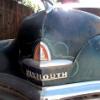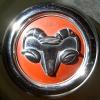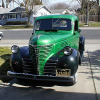Leaderboard
Popular Content
Showing content with the highest reputation on 04/11/2024 in all areas
-
Thanks sniper and DJK for digging up info. And here's my two cents about electric pumps. First off, I love 'em! And here's why: When one of my vehicles has been sitting for a long time, I don't have to waste precious battery capacity cranking the motor to get fuel up to and in the carb. I also put a electric switch in the supply line to the pump so that, in Autumn when I'm putting cars to sleep, I can turn off the switch and keep running the motor until it dies. This does a good job of draining the carb, reducing varnish build-up. Yes, I could use a gas additive (and I often do), but with lots of cars and equipment, and full gas tanks in each, that's lots of Stabil! And, in regards to leaving the mechanical pump in the line, I've done that numerous times, but one thing to consider is this: if you do that and the rubber diaphram of the mechanical pump fails, you'll get raw gas going into your crankcase and diluting your oil... and not know it!2 points
-
Rmon...........Can I throw a curved ball into the ring...........lol............in 1973 I installed a 318 Poly V8 in my 1940 Oz Dodge.............at the time there were no instructions available nor did I have much in the way of outside help but I could weld and use a tape measure so I had a go.........I was 19 and basically did a few things more than once but I still have the car & its Poly V8.........now you have a 1954 Plymouth.......did you know that in 1957 Chrysler here in Australia introduced what they called a Chrysler Royal..........it was based on the 1953/54 Plymouth body and chassis with 1955/56 front & rear fenders attached.............the interesting thing that you need to be aware of is that the Chrysler Royal for the 6 yrs of its use in Australia from 1957 to 1962 had a 313( essentially the same as the 318) Poly V8 which is basically the same block as the 1966 onwards 318/340 & 360 V8's that mopar used and in fact these later engines are in fact not as wide nor as heavy as the earlier 313/318 poly and also use a much lighter transmission............your best bet would be to get as late an LA series Mopar V8 & trans that you can, also a later rear axle from either a mopar or something else that fits & a disc brake conversion for the front and have at it ..........I've attached 3 pics of the Oz Chrysler Royals showing that 1953/54 Body shell....each in these cars was available with a 313(318) Poly V8 and cast Iron Torqueflite push button trans.......also a couple of pics of my 1940 Dodge 4dr Sedan & the 313/318 Poly V8 thats lived there for 51yrs now........regards from Australia.......Andy Douglas2 points
-
OP's first post mentioned flaking on the bottom shell of # 6 so I don't think he's going to be able to just leave them alone and since the engine was stuck he may need to go further in depth. The visual inspection is the start. How far the OP needs to go can be determined later. You've led a sheltered life. There's a lot of things that were done to salvage engines years ago that people shudder at today.1 point
-
@keithb7 has a great YouTube video on this. His electric pump is on a hidden switch. Faster starts, a backup if mechanical pump dies, and I think solves any vapor lock issues...it's on my list as well.1 point
-
The Champion story is very sad. My other parts bane were GM hvac blower motors. The ground wire is riveted thru the steel case, but they also put it through this cardboard insulator board. Totally unnecessary, and eventually the cardboard wears and shrinks, resulting in a loose ground wire. I have fixed three of these and they always failed the same way. If you split the motor you can drill the rivet, remove the offending cardboard, and repair it with a screw and nut, staked tight.1 point
-
My 40 Dodge as does all Oz cars has to use both front & rear licence or what we call number plates.....my car uses the original 1940 brackets that fit on both sides of the bumper dumb irons and are clamped with the dumb iron between them and fixed with a bolt on top of & at the bottom of where the dumb iron is.............then a stamped steel cross bracket is factory welded onto the dumb iron clamp and the number plate bolted onto this cross bracket........you can just see this clamp underneath the lower edge of the number plate. The rear plate attaches to the factory cross bracket which bolts onto the factory triangular mount on the trunk lid...........andyd1 point
-
https://www.amazon.com/Anytime-Tools-Micrometer-Precision-Machinist/dp/B0045UZGSC/ref=sr_1_4? You want a set like this.1 point
-
The decline of the Champion Spark Plug and the death of a company. The Champion electrode was made from mainly tungsten powder at a company called Fansteel in North Chicago. They mixed, pressed, sintered, burnished and then brazed it to the copper sparkplug core before shipping them out to Champion for assembly. The company also made many other items like the Lynx golf club casting, High end tungsten darts (Black Widows & Diamond Backs) as well as supporting WW1 & WW2 military needs, they downsized in the late 80s and were dismantled early in the 90s along with VR Wesson a sister company that made carbide cutting tools. Fansteel Inc.docx1 point
-
Second that thought. Never saw a plug blow apart on a flathead till I had three Champion plugs do it over two days. Switched to AC and never had another issue, same with the NGK which I also use in all my small engines, ATVs and motorcycle.1 point
-
Champion spark plugs...ran them for years in everything from V8s to single cylinder lawn and garden equipment...then in the late 90s, they needed to be replaced more often from electrode wear, and by the mid aughts they were blowing apart in the small engines, larger engines were fouling and hard to start in cold weather. Switched to AC Delco on big engines and NGK in small and haven't had a lick of trouble since.1 point
-
1 point
-
I looked at the license plate mount this afternoon, and tried to get the old plate off to be able to get a decent picture. It isn't quite as I remembered. The center (vertical) bracket hooks under the bumper, and the center bumper bolt passes through it, securing it to the bumper. Then there is a horizontal c channel bracket fixed to it (welded?), with long slots, to accommodate various mounting points for the different shapes of license tags used during that era. This is the best I could do, as the tag mounting bolts are rusted fast, and just turn on the back side. (I could have broken the tag off, but didn't want to ruin such a perfect license plate.... )1 point
-
In the downloads section there is an article about swapping a 318 into a 51 Plymouth. Might give you an idea though most, if not all, of the suppliers mentioned are out of business.1 point
-
Rmon, Welcome to the site. Sometimes you will get information directly answering your question and sometimes fodder ( I'm guilty of both) but stay and learn. I have not swapped out an L-head motor for any other type motor but I did use the search function on this site to pull up topics for you using the phrase " Engine Swaps" in the advanced search function on the site and came up with what should be some good reading and information regarding your question using the link here Showing results for '"engine swap"' in topics. - P15-D24.com and Pilot-house.com. Here is a file to using the search feature on this site. How I Search PD15-24 (1).pdf1 point
-
I have access to a parts car but it is a 47 or 48 2 door coupe. Not sure if the parts interchange or if the arm rests are still attached. Hoping to get out to the salvage yard this weekend or very early next week and will check. I will photo and advise once I know for sure. Dave1 point
-
Dan , It looks like your new/used parts are set up for 6 lug wheels . Are your wheels 5 lug ?1 point
-
1 point

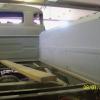
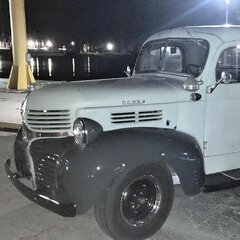


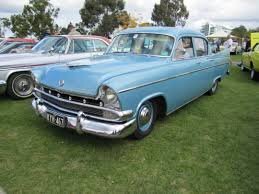

.jpg.2ad4c606e3fa10cf0f255b4a0154bfb9.jpg)
